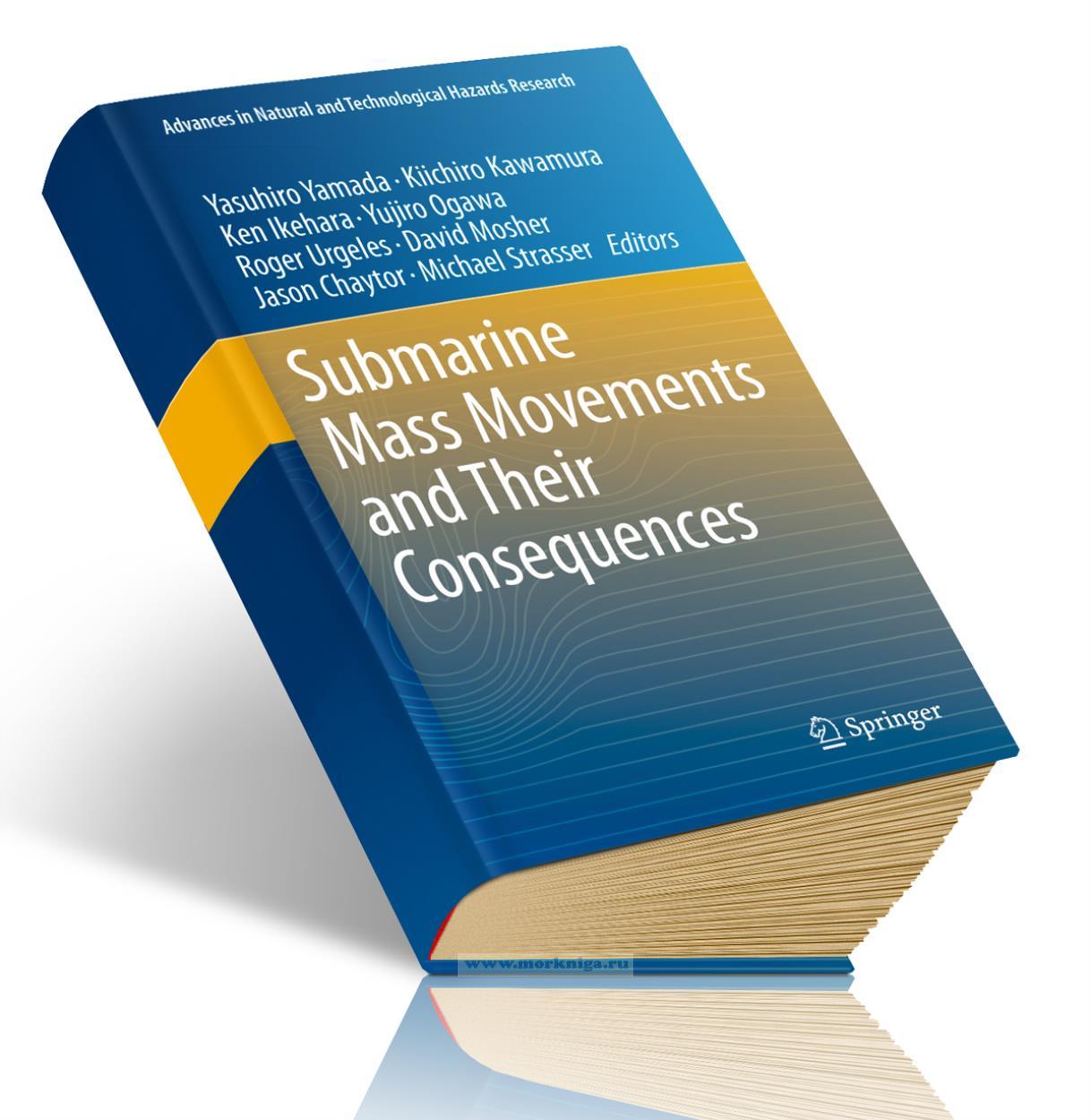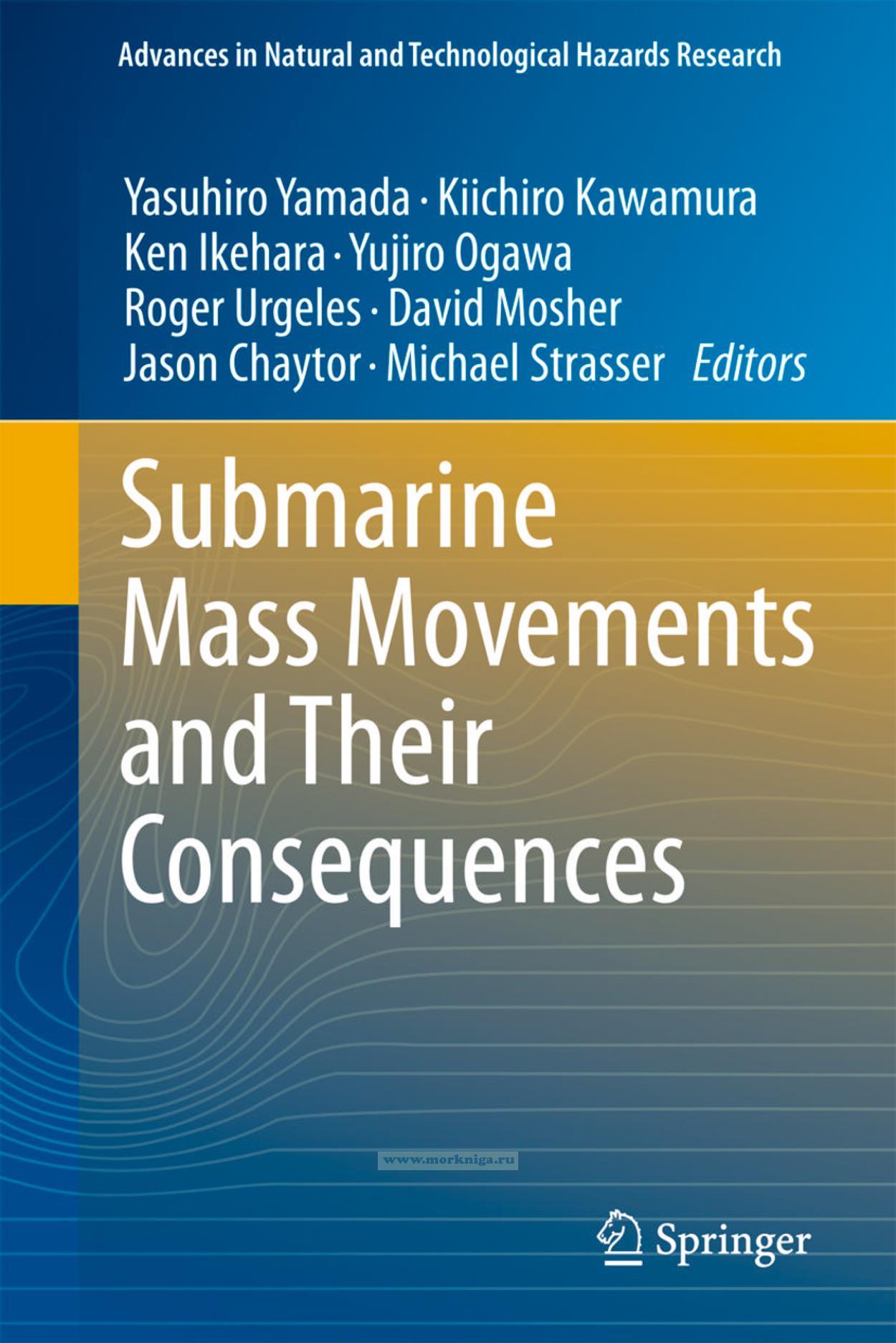Submarine Mass Movements and Their Consequences (4th International Symposium)/Подводные перемещения масс и их последствия
Книга на английском языке
Unique subject that is addressed in very few other publications and interest is growing rapidly
State of knowledge of submarine mass movements and their consequences
Engineering and environmental considerations of submarine slope failures Tsunami potential of submarine mass movements
Contents
1 Submarine Mass Movements and Their Consequences
Part I Physical Properties of Sediments and Slope Stability Assessment
2 Risk Assessment for Earthquake-Induced Submarine Slides
3 Shallow Landslides and Their Dynamics in Coastal and Deepwater Environments, Norway
4 Physical Properties and Age of Continental Slope Sediments Dredged from the Eastern Australian Continental Margin -Implications for Timing of Slope Failure
5 Submarine Landslides on the Upper Southeast Australian Passive Continental Margin - Preliminary Findings
6 Development and Potential Triggering Mechanisms for a Large Holocene Landslide in the Lower St. Lawrence Estuary
7 Spatially Fixed Initial Break Point and Fault-Rock Development in a Landslide Area
8 Pore Water Geochemistry as a Tool for Identifying and Dating Recent Mass-Transport Deposits
9 An In-Situ Free-Fall Piezocone Penetrometer for Characterizing Soft and Sensitive Clays at Finneidfjord (Northern Norway)
10 Static and Cyclic Shear Strength of Cohesive and Non-cohesive Sediments
11 Upstream Migration of Knickpoints: Geotechnical Considerations
Part II Seafloor Geomorphology for Trigger Mechanisms and Landslide Dynamics
12 A Reevaluation of the Munson-Nygren-Retriever Submarine Landslide Complex, Georges Bank Lower Slope, Western North Atlantic
13 Submarine Landslides in Arctic Sedimentation: Canada Basin
14 Extensive Erosion of the Deep Seafloor - Implications for the Behavior of Flows Resulting from Continental Slope Instability
15 Investigations of Slides at the Upper Continental Slope Off Vesteralen, North Norway
16 Dakar Slide Offshore Senegal, NW-Africa: Interaction of Stacked Giant Mass Wasting Events and Canyon Evolution
17 Large-Scale Mass Wasting on the Northwest African Continental Margin: Some General Implications for Mass Wasting on Passive Continental Margins
18 Deep-Seated Bedrock Landslides and Submarine Canyon Evolution in an Active Tectonic Margin: Cook Strait, New Zealand
19 Polyphase Emplacement of a 30 km3 Blocky Debris Avalanche and Its Role in Slope-Gully Development
20 Slope Failure and Canyon Development Along the Northern South China Sea Margin
21 Distinguishing Sediment Bedforms from Sediment Deformation in Prodeltas of the Mediterranean Sea
22 Hydroacoustic Analysis of Mass Wasting Deposits in Lake Ohrid (FYR Macedonia/Albania)
23 New Evidence of Holocene Mass Wasting Events in Recent Volcanic Lakes from the French Massif Central (Lakes Pavin, Montcineyre and Chauvet) and Implications for Natural Hazards
Part III Role of Fluid Flow in Slope Instability
24 A Review of Overpressure, Flow Focusing, and Slope Failure
25 How Do ~2° Slopes Fail in Areas of Slow Sedimentation? A Sensitivity Study on the Influence of Accumulation Rate and Permeability on Submarine Slope Stability
26 The BGR Slide Off Costa Rica: Preconditioning Factors, Trigger, and Slide Dynamics
27 Detailed Observation of Topography and Geologic Architecture of a Submarine Landslide Scar in a Toe of an Accretionary Prism
28 Possible Ground Instability Factor Implied by Slumping and Dewatering Structures in High-Methane-Flux Continental Slope
29 Identification of Weak Layers and Their Role for the Stability of Slopes at Finneidfjord, Northern Norway
30 Mass Movements in a Transform Margin Setting: The Example of the Eastern Demerara Risе
Part IV Mechanics of Mass-Wasting in Subduction Margins
31 Slope Failures in Analogue Models of Accretionary Wedges
32 Systematic Development of Submarine Slope Failures at Subduction Margins: Fossil Record of Accretion-Related Slope Failure in the Miocene Hota Accretionary Complex, Central Japan
33 Morphologic Expression of Accretionary Processes and Recent Submarine Landslides Along the Southwestern Pacific Margin of Colombia
34 Submarine Mass Wasting Off Southern Central Chile: Distribution and Possible Mechanisms of Slope Failure at an Active Continental Margin
35 An Overview of the Role of Long-Term Tectonics and Incoming Plate Structure on Segmentation of Submarine Mass Wasting Phenomena Along the Middle America Trench
Part V Post-Failure Dynamics
36 Dynamics of Submarine Liquefied Sediment Flows: Theory, Experiments and Analysis of Field Behavior
37 Undrained Sediment Loading Key to Long-Runout Submarine Mass Movements: Evidence from the Caribbean Volcanic Arc
38 Impact Drag Forces on Pipelines Caused by Submarine Glide Blocks or Out-Runner Blocks
39 A Surging Behaviour of Glacigenic Debris Flows
40 Failure Processes and Gravity-Flow Transformation Revealed by High-Resolution AUV Swath Bathymetry on the Nice Continental Slope (Ligurian Sea)
41 Submarine Landslides, Gulf of Mexico Continental Slope: Insights into Transport Processes from Fabrics and Geotechnical Data
Part VI Landslide Generated Tsunamis
42 Tsunamis Generated by Submarine Landslides
43 Micro-bathymetric Evidence for the Effect of Submarine Mass Movement on Tsunami Generation During the 2009 Suruga Bay Earthquake, Japan
44 Re-evaluation of the 1771 Meiwa Tsunami Source Model, Southern Ryukyu Islands, Japan
45 The 1978 Quick Clay Landslide at Rissa, Mid Norway: Subaqueous Morphology and Tsunami Simulations
46 Geowave Validation with Case Studies: Accurate Geology Reproduces Observations
47 Tsunami Hazards for Nuclear Power Plants: Mass Failures, Uncertainty, and Warning
Part VII Witnessing and Quasi-Witnessing of Slope Failures
48 Submarine Slope Response to Earthquake Shaking Within Western Sagami Bay, Central Japan
49 Discovery of Submarine Landslide Evidence Due to the 2009 Suruga Bay Earthquake
50 Settling of Earthquake-Induced Turbidity on the Accretionary Prism Slope of the Central Nankai Subduction Zone
51 Study of Recent Small-Scale Landslides in Geologically Active Marine Areas Through Repeated Multibeam Surveys: Examples from the Southern Italy
Part VIII Architecture of Mass Transport Deposits/Complexes
52 Sedimentary Melanges and Fossil Mass-Transport Complexes: A Key for Better Understanding Submarine Mass Movements?
53 The Specchio Unit (Northern Apennines, Italy): An Ancient Mass Transport Complex Originated from Near-Coastal Areas in an Intra-Slope Setting
54 Internal Stress Fields of a Large-Scale Submarine Debris Flow
55 Distribution of Submarine Mass Movement Deposits: An Exhumed Basin Perspective
56 Seismic-Scale Rafted and Remnant Blocks over Salt Ridges in the Espirito Santo Basin, Brazil
57 Permian and Triassic Submarine Landslide Deposits in a Jurassic Accretionary Complex in Central Japan
58 Systematic Spatial Variations in the Fabric and Physical Properties of Mass-Transport Deposits in the Ursa Region, Northern Gulf of Mexico
59 Records of Submarine Landslides in Subduction Input Recovered by IODP Expedition 322, Nankai Trough, Japan
60 Scientific Drilling of Mass-Transport Deposits in the Nankai Accretionary Wedge: First Results from IODP Expedition
61 Rock-Magnetostratigraphy of Hawaiian Archipelagic Sediments: Timing of Giant Submarine Landslides of the Hawaiian Ridge
62 Gravity Flow Deposits in the Deep Rockall Trough, Northeast Atlantic
Part IX Relevance of Natural Climate Change in Triggering Slope Failures
63 Submarine Mass Wasting in Isfjorden, Spitsbergen
64 Comparison of Quaternary Glaciogenic Debris Flows with Blocky Mass-Transport Deposits in Orphan Basin, Offshore Eastern Canada
65 Recent Submarine Landslides on the Continental Slope of Storfjorden and Kveithola Trough-Mouth Fans (North West Barents Sea)
66 One Million Years of Climatic Generated Landslide Events on the Northwestern Barents Sea Continental Margin
Author Index
Subject Index

